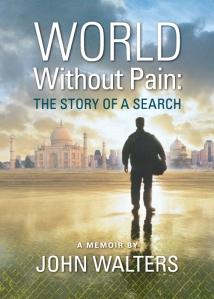This book gives us a bird’s eye view of all of human history. Really. The writer starts way back at the beginning, hundreds of thousands of years ago, and works his way through hunting and gathering societies, tribes, chiefdoms, and states all in answer to the question of why the world is the way it is and human societies evolved the way they did. More specifically, he aims to refute once and for all the racist viewpoint that the inherent talents and abilities of peoples caused some to conquer and attain wealth and others to fall by the wayside and be trampled upon. He instead posits that environment was of paramount importance in the evolution of food production, complex societies, and the guns, germs, and steel that allowed some nations to conquer others.
After an overview of the beginnings of human evolution, Diamond gets down to business. His initial example is the story of how the Spanish conquistador Francisco Pizarro and a tiny band of Spanish soldiers conquered the mighty Inca empire. Why did it happen like this and not the other way around? And with that the reader is launched into a breathtaking roller coaster ride through history. The story begins with food production. Back in the day, all humans were hunter-gatherers, eating wild plants and hunting wild beasts. People in some locations on some continents, however, eventually turned to food production, to cultivating and harvesting indigenous crops. Other people saw what those people were doing and picked up food producing fever themselves. But why did some do it and not others? The answer, says Diamond, lies in the available indigenous plants suitable for domesticating, an abundance of which were found in the Fertile Crescent. Another important factor in the rise of crowded, sedentary societies was the domestication of wild animals, and the majority of easily domesticated animals were indigenous to – you guessed it – the Fertile Crescent. Thus the rise of early civilizations in what is now Iran, Iraq, and the rest of the Middle East.
But that’s just a start. Another important environmental factor in the rise of nations in Eurasia as technological superpowers was the east-west axis of Eurasia, making it possible for food production and animal domestication to spread rapidly across the continent through similar climate zones. Not only were there fewer easily domesticated native plants and animals in Africa and North and South America, but the north-south axis of the continents and continent-spanning natural barriers made it difficult for ideas to spread.
Along with food production comes the rise of complex societies that can support different castes and classes such as administrators, priests, craftspeople, and scholars. This encourages writing and technological innovation, which in turn spur more complexity, more innovation, more expansion. One other factor comes into play as well in complex, dense societies – the spread of diseases brought on by the rise of animal domestication. Eventually people develop immunity from those diseases, but when they carry the germs to new societies that have had no previous exposure, those with no immunity are all but wiped out. This famously happened during the European conquest of the Americas, during which far more Native Americans died of disease than from warfare or any other oppression. It also happened during the European conquest of aboriginal Australia.
I can’t possibly summarize all of the author’s arguments in this brief review. He goes through the histories of Australia, New Guinea, Indonesia, China, Africa, North and South America. The book is fascinating, erudite, and the author holds together all the disparate material and makes a great case for his argument that human history and the rise of civilization was largely dependent on the environments in which the various aboriginal peoples of the world found themselves. They adapted as best they could to the materials, flora, and fauna around them and thus became as efficient as they could within the limits of their surroundings.
I doubt there’s a book I’ve ever read that I agree with unequivocally or endorse one hundred percent, and this book is no exception. It is, however, very well written and provides abundant food for thought. For the first two-thirds I was drawn in as if I was reading a novel, but the last third lagged a bit. Perhaps it’s because the author goes over material he’s already covered as he emphasizes the point he is trying to make. Overall, though, the book is a good read. In the end, the author presents a case that history should be treated as a science rather than a humanity. He couldn’t have given a better example to illustrate his point than this book.

































I also enjoyed this book immensely. Your review is spot on. I have outlined a novel (which will have to wait its turn, alas) which speculates on the corollary to which you allude: What would the world look like if the Europeans were the ones to suffer from mass epidemics as a result of contact with the New World?
It sounds like a fascinating novel. I hope you get a chance to write it.